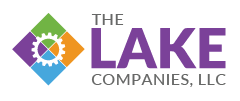Optimizing SyteLine ERP’s Inventory Management for Better Turnover and Cost Savings

Effective inventory management is crucial for scaling your manufacturing operations. By optimizing inventory turnover and achieving cost savings, you can ensure that your business runs smoothly and profitably. The key lies in accurate data and strategic planning. When you have precise information on your bills of materials, routings, and vendor lead times, you can make informed decisions that reduce excess inventory and improve cash flow. Our APS Made Easier solution for SyteLine ERP takes you through the process of optimizing inventory and scheduling in a way that does not overwhelm your team, while recognizing ongoing stackable benefits along the way.
Regular Inventory Snapshots
One of the first steps in optimizing inventory management is to take regular inventory snapshots with Fact-Trak™. These snapshots provide a clear picture of your inventory levels at different times, allowing you to identify trends and make necessary adjustments. For instance, you can use quick filters to analyze specific categories, such as raw materials or finished goods. This targeted approach helps you understand which items are moving quickly and which are not, enabling you to make strategic decisions about purchasing and stock levels.
Accurate Data and Predictive Planning
Accurate data on bills of materials and routings is also essential. When these data points are precise, you can better predict your inventory needs and avoid overstocking. For example, if you know the exact amount of materials required for each product and the time it takes to produce it, you can plan your inventory more effectively. This reduces the risk of holding excess stock, which ties up capital and takes up valuable warehouse space.
Managing Vendor Lead Times
Vendor lead times are another critical factor. By measuring and improving lead times, you can ensure that you receive materials when you need them, without holding excessive inventory. If a vendor’s lead time is inconsistent, it can disrupt your production schedule and lead to stockouts or overstocking. In such cases, it’s important to negotiate with your vendors to establish more reliable lead times. This might involve asking them to stock certain items for you or finding alternative suppliers who can meet your requirements more consistently.
Analyzing Inventory Turns
Optimizing inventory management in SyteLine ERP also involves analyzing inventory turns. This metric indicates how often your inventory is sold and replaced over a specific period. A high inventory turnover rate typically suggests efficient inventory management, while a low rate may indicate overstocking or slow-moving items. By regularly reviewing your inventory turns, you can identify areas for improvement. For example, you might decide to liquidate slow-moving items to free up space, reduce carrying costs and potentially expand manufacturing to utilize the space. This helps the landlocked manufacturer to leverage more of their facilities without the additional costs of leasing new space.
Efficiency and Cost Savings
Cost savings in inventory management are not just about reducing stock levels but also about improving efficiency. By streamlining processes and reducing errors, you can save both time and money. For instance, automating inventory tracking can reduce the need for manual data entry, minimizing the risk of errors and freeing up staff to focus on more strategic tasks. This not only saves on labor costs but also improves accuracy, leading to better decision-making.
Implementing Technology and Best Practices
Implementing these strategies requires a combination of technology and process improvements. Advanced inventory management systems can provide the tools you need to track inventory levels, analyze data, and make informed decisions. These systems often include features like real-time tracking, automated reordering, and detailed reporting. By leveraging technology, you can gain a comprehensive view of your inventory and identify opportunities for optimization.
However, technology alone is not enough. It’s also important to establish best practices and continuously refine your processes. This includes training your team, setting up regular review cycles, and involving key stakeholders in decision-making. A collaborative approach ensures that your inventory management strategies are effective and sustainable, leading to long-term success.
In conclusion, optimizing inventory management is essential for better turnover and cost savings. By taking regular inventory snapshots, managing vendor lead times, and analyzing inventory turns, you can make informed decisions that enhance efficiency and reduce costs. Embrace advanced inventory management systems and best practices to streamline your operations and support scalable growth. With the right strategies in place, you can transform your inventory management and drive success in your manufacturing operations.
For more information on how The Lake Companies’ tools can help your organization optimize SyteLine ERP inventory management, contact us.


Comments are closed.